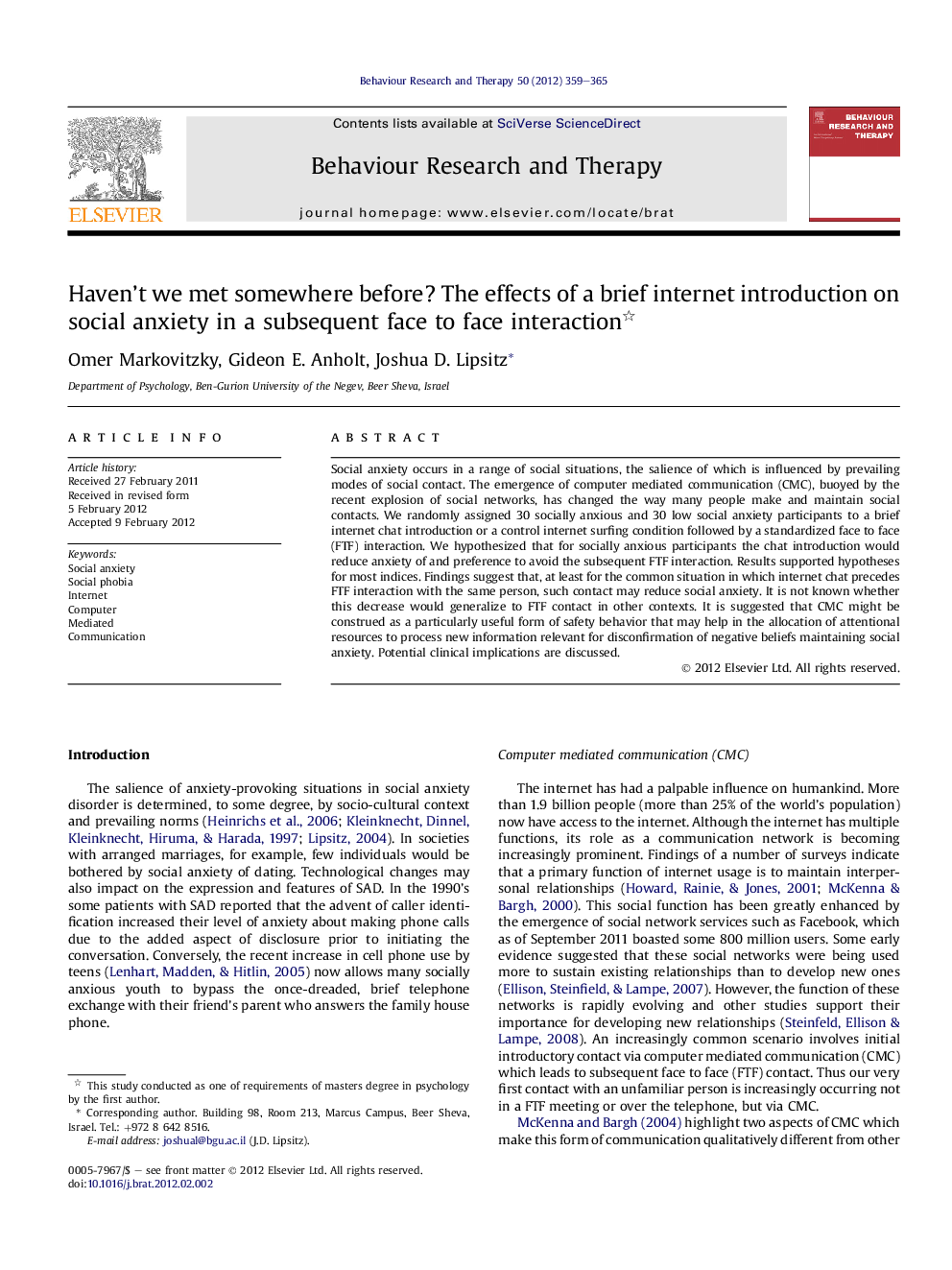| Article ID | Journal | Published Year | Pages | File Type |
|---|---|---|---|---|
| 901995 | Behaviour Research and Therapy | 2012 | 7 Pages |
Social anxiety occurs in a range of social situations, the salience of which is influenced by prevailing modes of social contact. The emergence of computer mediated communication (CMC), buoyed by the recent explosion of social networks, has changed the way many people make and maintain social contacts. We randomly assigned 30 socially anxious and 30 low social anxiety participants to a brief internet chat introduction or a control internet surfing condition followed by a standardized face to face (FTF) interaction. We hypothesized that for socially anxious participants the chat introduction would reduce anxiety of and preference to avoid the subsequent FTF interaction. Results supported hypotheses for most indices. Findings suggest that, at least for the common situation in which internet chat precedes FTF interaction with the same person, such contact may reduce social anxiety. It is not known whether this decrease would generalize to FTF contact in other contexts. It is suggested that CMC might be construed as a particularly useful form of safety behavior that may help in the allocation of attentional resources to process new information relevant for disconfirmation of negative beliefs maintaining social anxiety. Potential clinical implications are discussed.
► Computer mediate communication has changed the way people interact. ► This change may have special impact on those with social anxiety. ► We tested effects of an internet introduction on subsequent social anxiety. ► Results suggest that internet contact may reduce social anxiety and avoidance.
